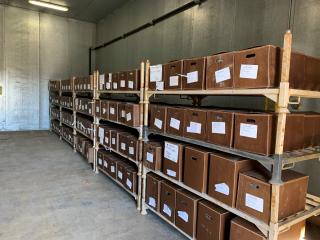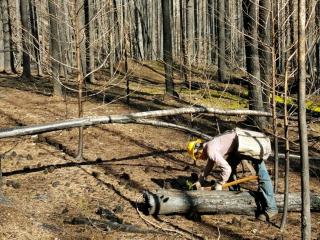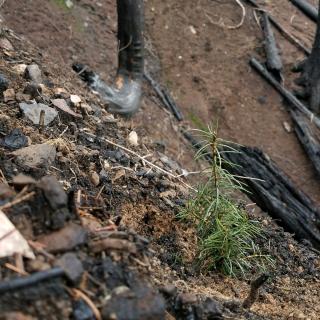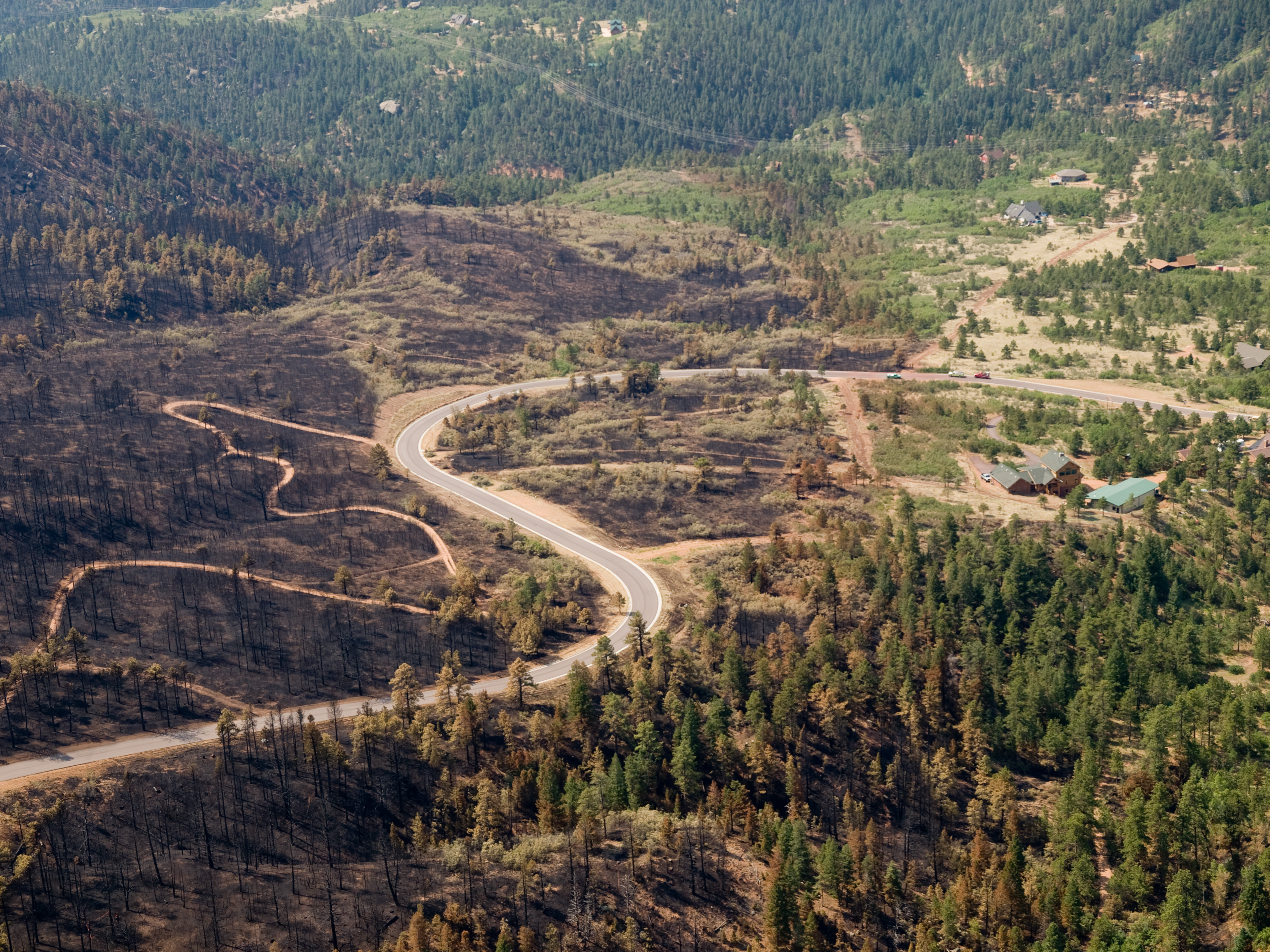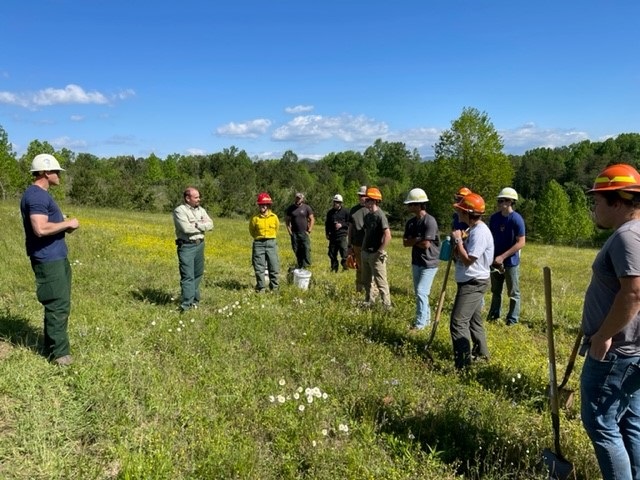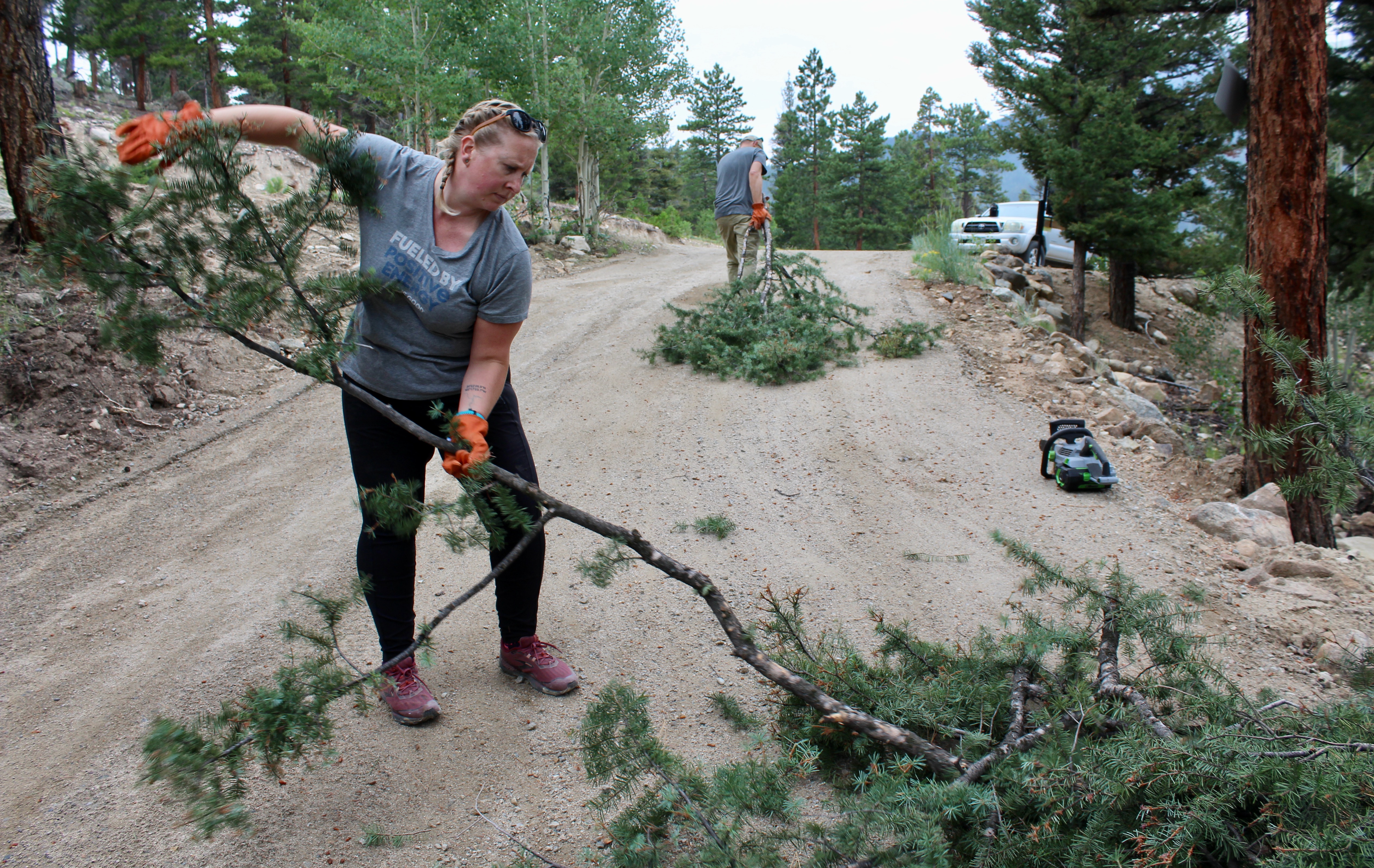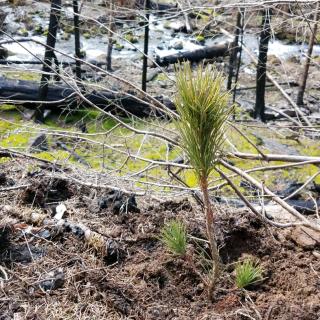
Editor’s note: The USDA Forest Service recently announced a 10-year strategy to confront the wildfire crisis and improve forest resilience. Wildfires create more than 80 percent of reforestation needs across the United States. The agency will work with partners over the next decade to increase reforestation and invest in nursery capacity. This article highlights how partners come together to address these needs and the benefits to local communities.
From the banks of Oregon’s North Umpqua River, the forest is black as far
as the eye can see. The once towering green firs are now charred trunks, and ash has replaced the carpet of ferns. The Labor Day fires burned one million acres across Oregon in September 2020. On the Umpqua National Forest, 36,000 acres burned in the Archie Creek and Thielsen Fires.
The scale of the damage was devastating. But clinging to the burned hillsides are tiny green flickers of hope. Over the last year, the Umpqua National Forest partnered with the National Forest Foundation and the Arbor Day Foundation to plant 440,000 tree seedlings across these burned lands.
The work was arduous. Forest Service employees and contractors scaled steep slopes slippery with scorched soil and planted each seedling by hand. But replanting after the fires was critical to restoring forest health and investing in downstream communities.
“The Archie Creek Fire particularly was a high severity fire with a high rate of tree mortality,” said Deputy District Ranger Mark Sommer. “In many areas, natural regeneration of the forest was not going to happen, because large swaths of trees were essentially cooked. There were little to no natural seed sources left. The Forest Service is actively replanting those areas to accelerate the restoration of healthy forests and functioning watersheds.”
The Umpqua National Forest identified locations where natural regeneration was least likely and where forest cover was most urgently needed. The agency also planted trees along streams that are sensitive habitat for coho salmon and steelhead trout. These species depend on shade to keep stream waters sufficiently cold. Other benefits of tree planting include slowing the spread of invasive species, enhancing wildlife habitat, and improving water quality.
Replanting after wildfires is also important for local communities. National Forests are the nation’s largest source of municipal drinking water. Neary towns like Glide and Roseburg depend on the North Umpqua River for their water. Because wildfires kill the vegetation that binds soil to the landscape, they increase the likelihood of landslides and erosion. If the North Umpqua River is too muddy from eroded soil, water treatment plants downstream cannot work effectively. Planting trees after a wildfire stabilizes streambanks and protects municipal water supplies.
The Umpqua National Forest could not have completed such a huge project alone. Partners were instrumental in raising the funds necessary to purchase half a million seedlings, and contractors were key to getting them in the ground.
Partners are organizations that voluntarily collaborate with the Forest Service on projects of mutual interest. Both parties contribute funding and other resources toward a shared goal. Together, they can accomplish far more than either could do alone.
The Arbor Day Foundation and the National Forest Foundation were two significant partners of the Umpqua National Forest. Through its Trees in Memory program, the Arbor Day Foundation enabled people to donate trees to the Umpqua in memory of lost loved ones. In addition to donating trees, the National Forest Foundation also raised money to restore popular recreation sites that were damaged in the Archie Creek Fire.
According to Patrick Shannon, the National Forest Foundation’s Pacific Northwest and Alaska Regional Director, reopening recreation sites is just as important as tree-planting. “It not only benefits local recreationists, but also economically benefits local communities that rely on tourism.”
In addition to partners, contractors also play a major role in post-fire restoration. The Umpqua National Forest increased its capacity to plant so many trees by contracting additional crews.
Fire seasons are worsening nationwide due to climate change and decades of fire suppression. As a result, restoration needs are growing across the National Forest System. Fortunately, the Bipartisan Infrastructure Law recently invested $5.5 billion in the Forest Service, including millions for post-fire restoration and tree planting. This funding will aid other National Forests in completing similar reforestation projects.
According to Forest Silviculturist Ryan Siebold, post-fire restoration will be a priority on the Umpqua National Forest for a long time. An estimated 20,000 acres on the Umpqua still need to be replanted. The Forest hopes to plant up to four million more seedlings over the next five years, and partners will remain essential to supporting this work.
“For us on the Umpqua, the scale of both the fires and the Forest Service’s response was exceptional,” said Deputy District Ranger Mark Sommer. “Over the course of our careers, we hadn’t experienced such severe fire over that large of an area of our Forest and community. Restoration, including replanting, will continue to be a significant workload, but we are proud to be able to pull it off together with our partners.”
Learn more about the role of partnerships in stewarding your National Forests by visiting the website of the National Partnership Office. Learn more about the National Forest Foundation and the Arbor Day Foundation by visiting their websites.

